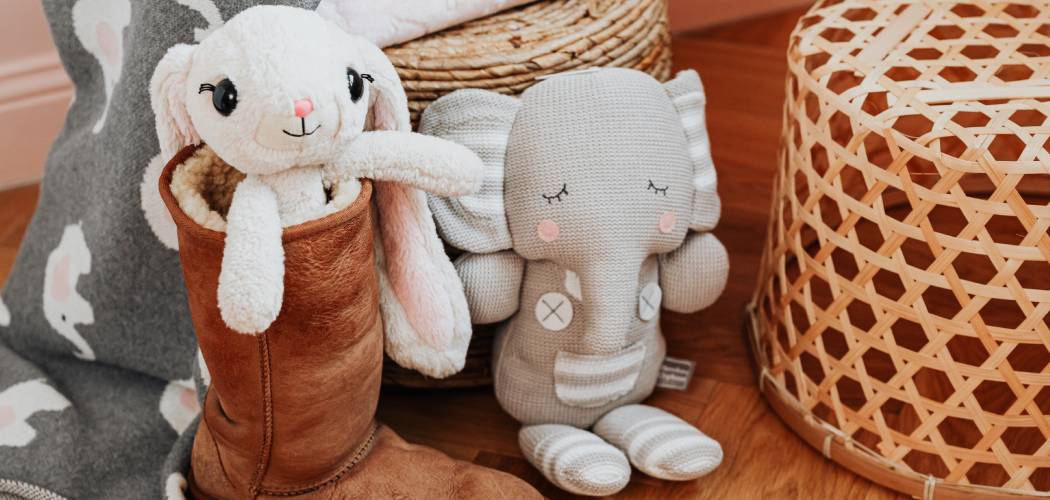Cleaning and maintaining your child’s beloved Jellycat stuffed animals is a crucial part of ensuring their longevity and hygiene. These adorable plush companions often become cherished members of the family, and knowing how to wash them properly is essential.
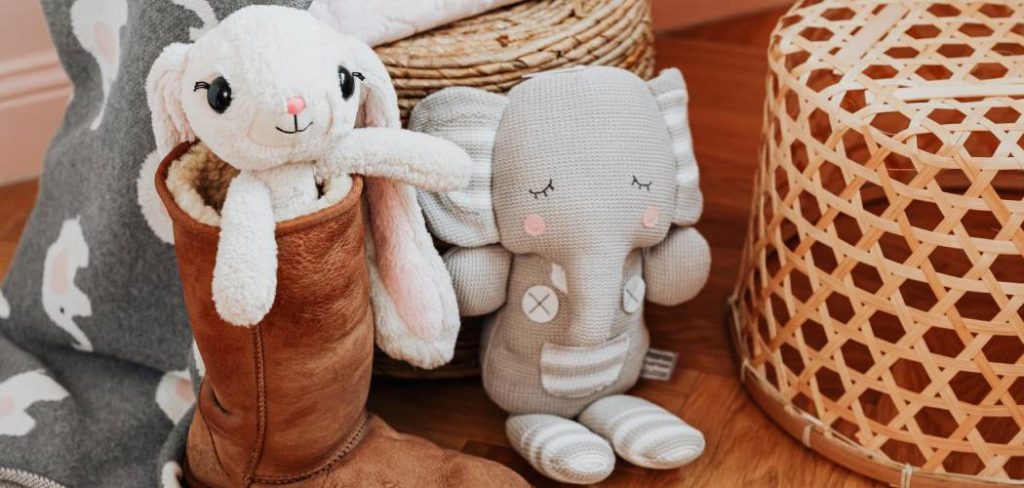
In this guide, we’ll explore the recommended steps for how to wash jellycat. While the manufacturer advises surface washing with non-toxic soap, there are specific techniques to follow to ensure the best results.
Whether your Jellycat friend has had a little too much fun and needs a refresh or you want to keep it in tip-top shape, this article will provide you with the guidance you need. So, let’s dive into the gentle and caring process of cleaning Jellycat stuffed animals to ensure they stay huggable and cuddly for years to come.
Importance of Washing Stuffed Animals
Stuffed animals, such as Jellycat toys, can quickly become dirty from everyday use. They are often handled by children and may be brought outside or into different environments. As a result, they can collect dirt, dust, and bacteria over time.
Not only can this make the stuffed animal look unpleasant, but it can also pose health risks for both children and adults. This is why it is important to regularly wash stuffed animals, including Jellycat toys, to keep them clean and hygienic.
Benefits of Washing Stuffed Animals
Washing stuffed animals has many benefits, including:
- Removing dirt and bacteria: As mentioned before, stuffed animals can collect dirt and bacteria over time. Regular washing can help remove these impurities and keep the toy clean.
- Maintaining appearance: Washing stuffed animals can also help maintain their appearance. Regular cleaning can prevent the build-up of stains and discoloration, keeping the toy looking new for longer.
- Preventing allergies: Dust and allergens can easily accumulate on stuffed animals, causing allergic reactions in sensitive individuals. By washing them regularly, you can reduce the risk of allergies and keep the toy safe for children to play with.
- Extending lifespan: Proper maintenance, including washing, can help extend the lifespan of stuffed animals. This is especially important for beloved toys, such as Jellycat toys, that may have sentimental value.
10 Methods How to Wash Jellycat
1. Hand Wash
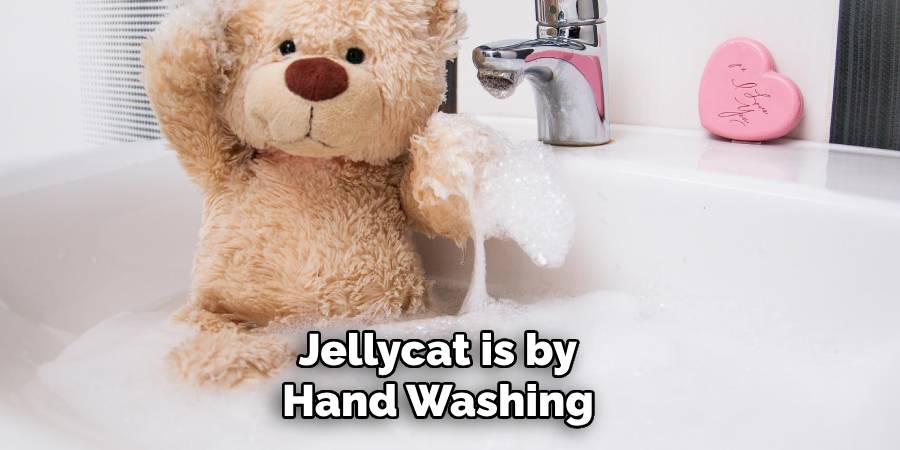
The best way to wash a Jellycat is by hand washing it in lukewarm water and mild detergent. Start by filling a basin or sink with lukewarm water and adding a small amount of mild detergent, such as baby shampoo or wool wash. Then, submerge the Jellycat in the soapy water and gently massage the fabric with your hands to remove any dirt or stains. Once finished, rinse the Jellycat thoroughly with clean water and then squeeze out any excess moisture before laying it flat to air dry.
2. Machine Washing
If you don’t have time for hand washing, you can also machine wash your Jellycat on a gentle cycle using cold water and mild detergent. Make sure to use a mesh laundry bag to protect the fabric from snagging on other items in the washing machine. After washing, lay your Jellycat flat to air dry or tumble dry on low heat if needed.
3. Spot Cleaning
For minor stains or dirt spots, spot cleaning is an effective way to clean your Jellycat without having to wash the entire toy. Start by dampening a cloth with warm water and mild detergent and then gently rub the stained area until it’s clean. Once finished, rinse off any remaining soap residue with cold water and then let it air dry completely before using it again.
4. Dry Cleaning
If your Jellycat has been heavily soiled or stained, you may want to consider taking it to a professional dry cleaner for cleaning instead of attempting to clean it yourself at home. Professional dry cleaners are experienced in safely cleaning delicate fabrics like those used on Jellycats, so they can help ensure that your toy stays looking its best for years to come!
5. Stains Removal
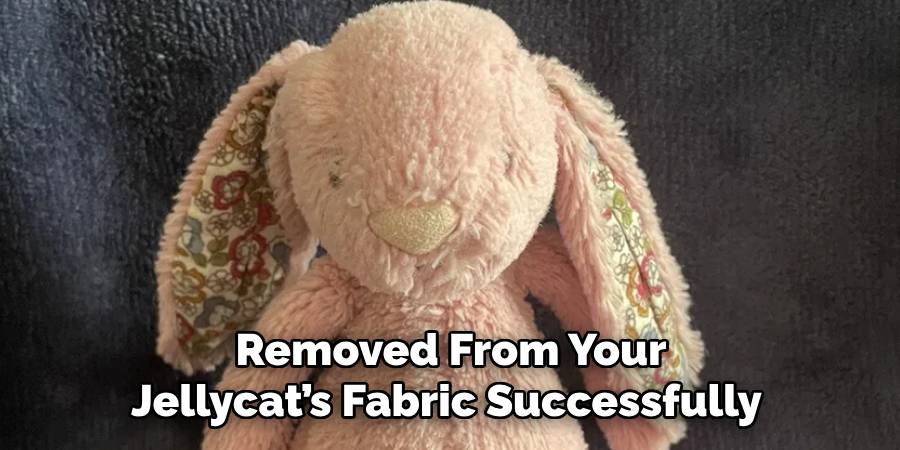
Some stains may require special treatment in order to be removed from your Jellycat’s fabric successfully without damaging it further.
If you find yourself dealing with particularly stubborn stains like ink or grease marks, try mixing together equal parts white vinegar and cool water in a bowl before dabbing onto the affected area with a cloth dipped into this solution; this should help break down the stain without discoloring or damaging the fabric itself!
6. Drying Techniques
Once you’ve finished cleaning your Jellycat, make sure that you properly dry it before using again! The best way is by laying it flat on top of a towel and allowing it to air-dry completely (this could take up anywhere from several hours up to an entire day). You can also tumble dry on low heat if needed; just make sure that you check regularly throughout drying time as high temperatures can cause shrinkage or damage!
7. Disinfecting Methods
If you need extra protection against germs and bacteria after cleaning your Jellycat, consider disinfecting it as well! To do this effectively without damaging its fabric, mix together one part white vinegar with four parts cool water in a spray bottle before spraying onto all surfaces of the toy (avoid spraying directly onto its face).
Allow this solution sit for 10 minutes before wiping away any excess liquid with paper towels; this should help kill off any lingering germs while also leaving behind a pleasant scent!
8. Odor Removal
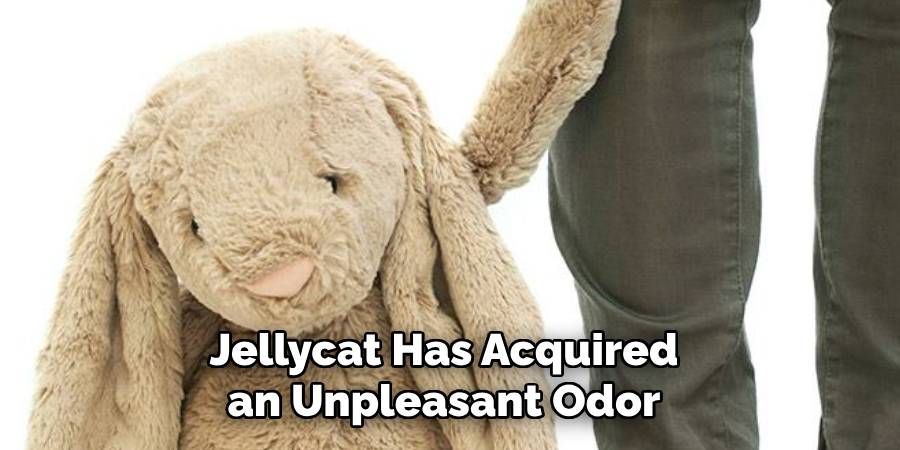
If your Jellycat has acquired an unpleasant odor over time (such as smoke smell), there are several methods available for removing odors from its fabric effectively without damaging them further: sprinkling baking soda over all surfaces of the toy before vacuuming off after 15 minutes;
soaking overnight in warm water mixed with 1/4 cup white vinegar; or spritzing lightly with vodka (which evaporates quickly!). Whichever method you choose – just make sure that you avoid using any harsh chemicals like bleach which could potentially discolor or degrade its material further!
9. Storage Tips
Finally – once your Jellycat is nice and clean – make sure that you store it properly when not in use! This means keeping away from direct sunlight which can cause fading over time; storing away from extreme temperatures which could cause shrinkage;
avoiding contact with sharp objects which could tear through its fabric; and making sure that all zippers are closed tightly when not being used (to prevent dust buildup!). Doing these things will help keep your beloved stuffed animal looking good as new for years down the road!
10. Maintenance Tips
To keep your Jellycats looking their best over time, regular maintenance is key! This means brushing out its fur every few months (using either an old toothbrush or pet brush); spot-cleaning when necessary (see steps 3-5 above); protecting against dust buildup by covering when not being used;
laundering periodically according to instructions (try to avoid washing too often as this could cause wear and tear over time); and, finally – making sure that you treat your Jellycat with love and care every chance that you get!
Things to Consider When Washing Jellycat

Jellycat is a popular brand of soft toys that are beloved by both children and adults. These plush toys come in various shapes, sizes, and designs, making them an adorable addition to any collection. However, like any other stuffed toy, these cuddly creatures tend to get dirty after all the love and play they receive.
It’s essential to keep your Jellycat clean and maintain its quality to ensure it lasts for a long time. But, washing these toys requires some considerations to be taken into account. In this guide, we’ll discuss the things you should consider when washing your Jellycat.
Material
The first thing to consider is the material of your Jellycat. These plush toys are made from different fabrics, such as cotton, polyester, and acrylic. Some may even have a combination of these materials. It’s essential to check the label or tags on your Jellycat to know what kind of fabric it is made from.
Knowing the material will help you determine if it can be washed in a machine or needs to be hand-washed. You should also take note of any special care instructions provided by the manufacturer.
Washing Instructions
Once you know the material of your Jellycat, you can follow the recommended washing instructions. Generally, most Jellycats can be washed in a machine on a gentle cycle with cold water. However, some may require hand-washing or spot-cleaning only.
If your Jellycat has any delicate parts, such as embroidery or glued-on accessories, it’s best to hand-wash it. This will prevent any damage to these delicate features.
Drying
After washing, it’s important to properly dry your Jellycat to avoid any mold or mildew growth. If the label allows, you can put your toy in a dryer on low heat or air-dry it. It’s crucial not to use high heat as this can damage the fabric and cause shrinkage.
If hand-washing, gently squeeze out excess water before laying it flat to dry. Avoid wringing or twisting the toy, as this can also cause damage.
Conclusion
Although the process to clean your Jellycat may seem simple, it shouldn’t be taken for granted. If done properly, you can extend the life of your beloved stuffed animal while making sure all germs and dirt are properly removed. With the right combination of gentle detergent and detailed cleaning steps, washing a Jellycat toy is easier than you think.
Keeping in mind the temperature of the water and avoiding any harsh chemicals or scented detergents will ensure that your stuffing stays fluffed-up and happily intact. So, next time you’re viewing how to wash Jellycat videos on YouTube or asking your family for advice, remember these few things: gentle detergents and not too hot water solutions will ensure a care-free cleaning session that won’t damage your beloved soft toy. Good luck!
You Can Check It Out to Remove Sweat Smell from Mattress

